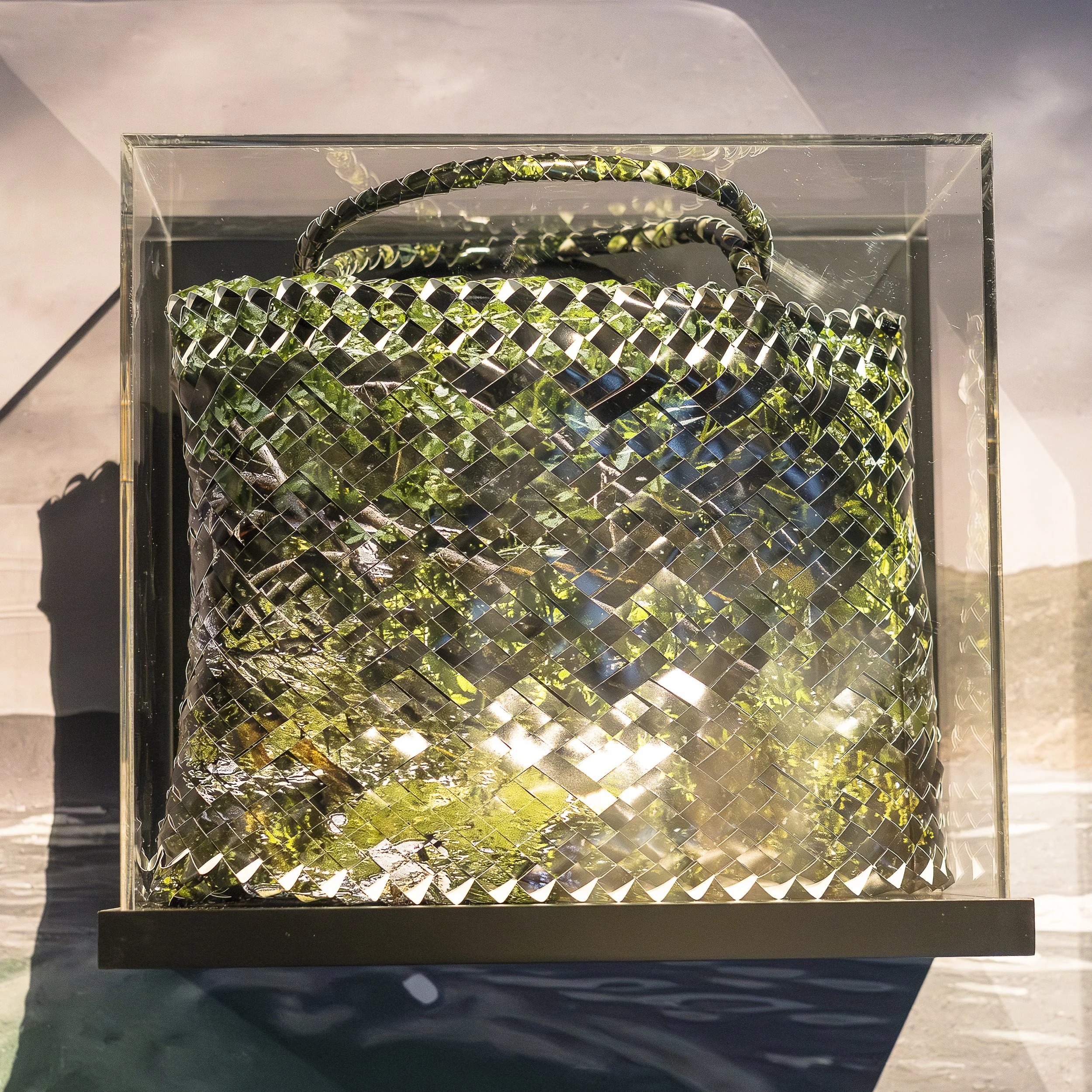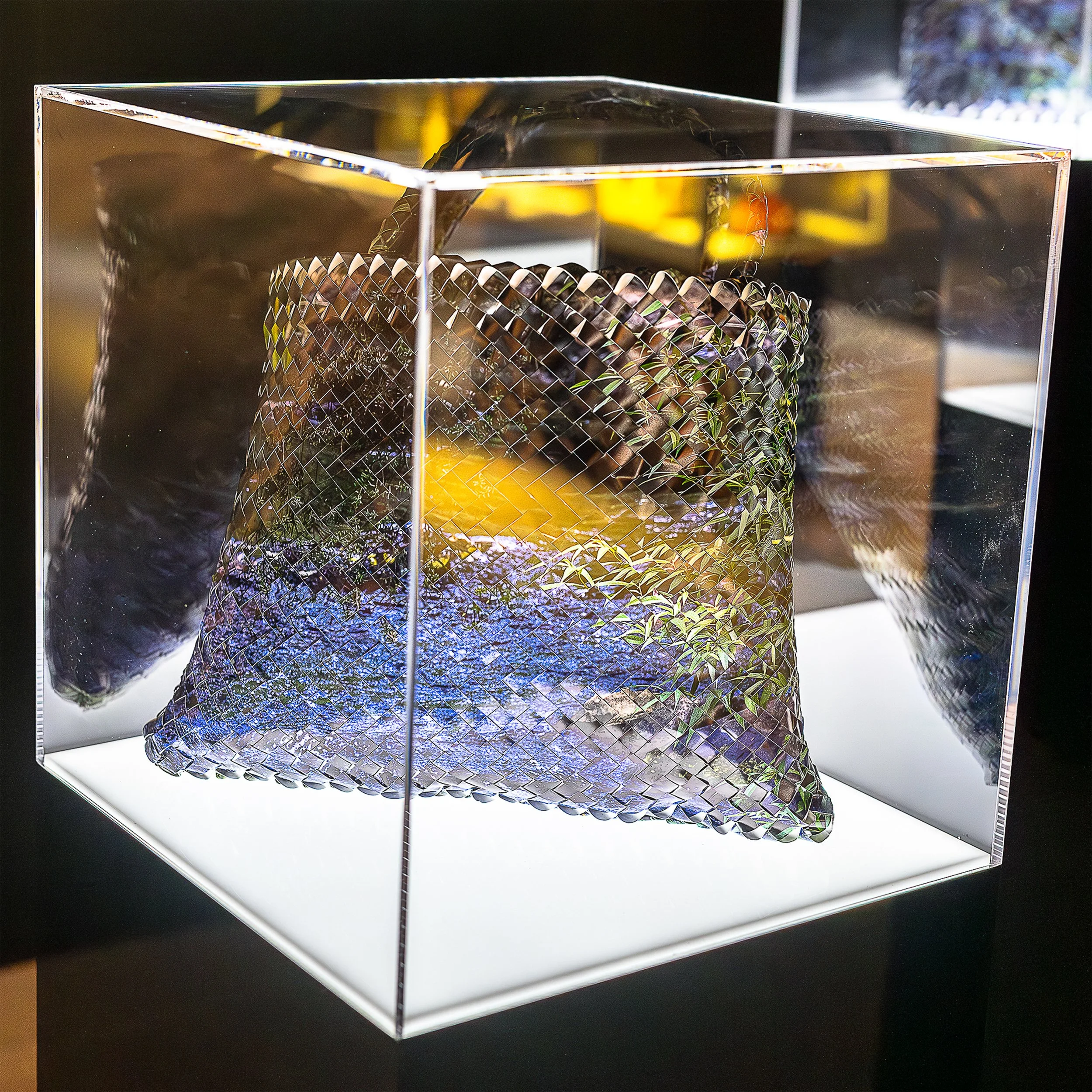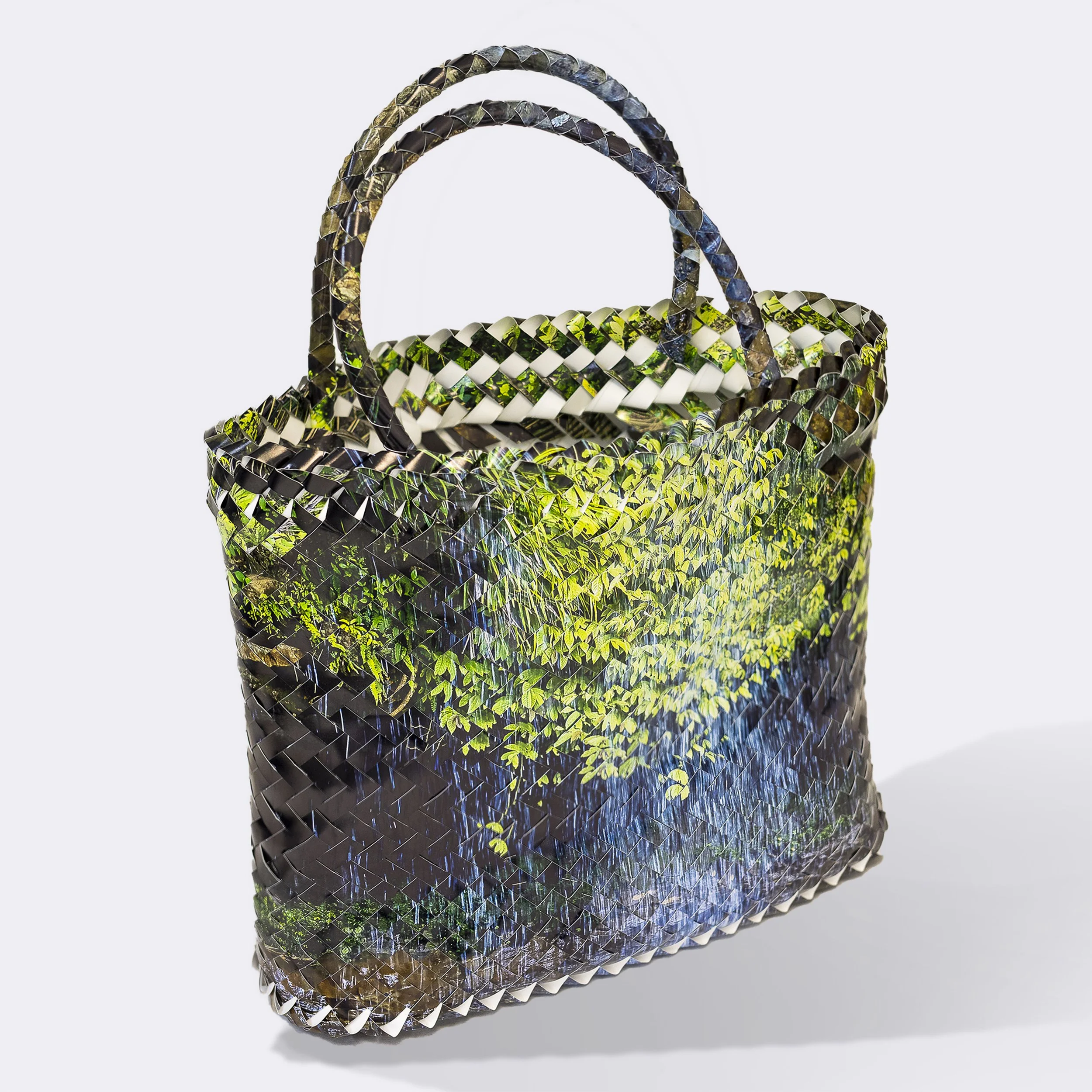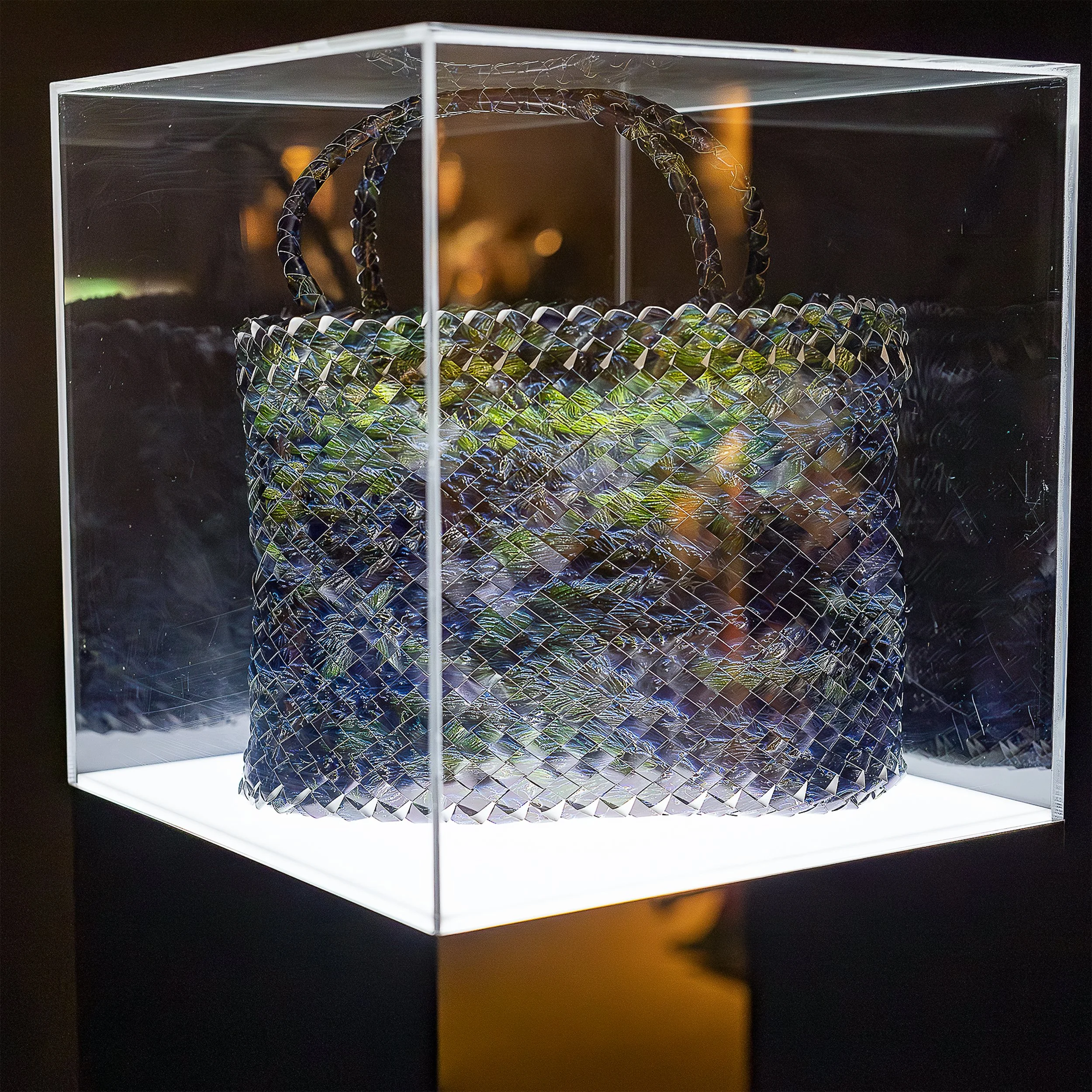Te raranga i te awa (weaving the river), EXCHANGE, Blak Dot Gallery 2025
Install Image by Dr Kirsten Garner Lyttle, 2025.
Dr Kirsten Garner Lyttle
Artist Statement for Te raranga i te awa (Weaving the River), EXCHANGE: ngunggilanha . yunggama . taonga tauhokohoko, curated by Dr Kimba Thompson and Catherine Hunt, Blak Dot Gallery, 33 Saxon Street Brunswick, VIC, 3056, April 5 - June 8, 2025
How do I use a camera when it has been wielded as a colonial weapon against my people? That question grounds my practice and the methodology of whakaahua; meaning “to acquire form, to transform, to photograph or portray.” Through whakaahua, I reimagine photography as a relational process that restores connection rather than extraction, transforming the image from a flat surface into a tactile, relational form.
Te raranga i te awa (Weaving the River) extends this research. In 2024, I returned to my ancestral homelands in Waikato to photograph oceans, rivers, streams and waterfalls connected to my iwi (tribe), Waikato Tainui, and hapū (sub-tribe), Ngāti Tahinga. Guided by cultural consultation and protocols, I approached these waters as an active participant, ancestor, and relative; recognising rivers as living beings that carry memory, history, and identity.
Back in my Northcote studio, the printed photographs were sliced, and woven into kete (baskets) using customary Māori weaving techniques known as raranga (weaving). I chose the form of the kete, because it is a vessel used to carry food, knowledge and memory. The weaving begins flat, with the photographic surface facing upwaards. As the sides are joined to form the cylindrical body of the kete, the photographs are turned inward, hidden from view. Once fully woven, the kete is turned inside out — much like a sewn garment — revealing the photographs once again on the outside. This process transforms the photograph from surface to vessel, from something to be looked at into something that holds, carries and protects knowledge.
Exhibited alongside a large wallpaper seascape depicting Kāwhia, the final landing place of the Tainui waka (canoe), are five woven photographic kete. Two kete are positioned in wall-mounted display cases, hovering over the seascape and casting shadows across it. Their placement above the water image represents a whakapapa (genealogical) connection between ancestors and descendants — a visual reminder that we, like the rivers, flow from those who came before. The remaining three kete sit on illuminated plinths and within acrylic vitrines. These displays echo the aesthetics of museum presentation while critically reflecting on how Indigenous ancestral belongings are often isolated behind glass and removed from community touch and presence.
Created with support from Creative Australia’s Arts Projects for Individuals and Groups, this series repositions photography as a living, relational Indigenous practice.
Dr Kirsten Garner Lyttle, Kāwhia, ( 2025), Wallpaper: Printed Phototex, 3100mm high x 2600mm wide.
Installation view of Niho Taniwha (2025), Waikaretuu Taniwha, (2025) displayed in wall mounted acrylic boxes on Kāwhia, ( 2025), Wallpaper, at Blak Dot Gallery, as part of EXCHANGE. Image Kirsten Garner Lyttle 2025.
Niho Taniwha (2025), Handwoven photographic Māori kete (carrying basket), image Kirsten Garner Lyttle 2025.
Installation view of Niho Taniwha (2025), at Blak Dot Gallery, as part of EXCHANGE. Image Kirsten Garner Lyttle 2025.
Waikaretuu Taniwha, (2025), Handwoven photographic Māori kete (carrying basket), image Kirsten Garner Lyttle 2025.
Installation view of Waikaretuu Taniwha, (2025) at Blak Dot Gallery, as part of EXCHANGE, image Kirsten Garner Lyttle 2025.
Waikaretuu (2025), Handwoven photographic Māori kete (carrying basket), image Kirsten Garner Lyttle 2025.
Installation view of Waikaretuu (2025), at Blak Dot Gallery, as part of EXCHANGE, image Kirsten Garner Lyttle 2025.
Waikaretuu Waterfall (2025), Handwoven photographic Māori kete (carrying basket), image Kirsten Garner Lyttle 2025.
Installation view of Waikaretuu Waterfall (2025) at Blak Dot Gallery, as part of EXCHANGE, image Kirsten Garner Lyttle 2025.
Te repo (the Wetlands), (2025), Handwoven photographic Māori kete (carrying basket), image Kirsten Garner Lyttle
Installation view of Te repo (the Wetlands), (2025) at Blak Dot Gallery, as part of EXCHANGE, image Kirsten Garner Lyttle 2025.












